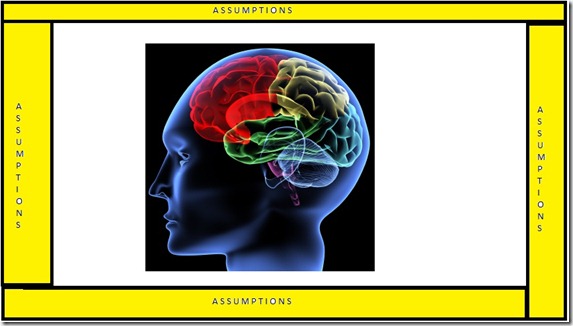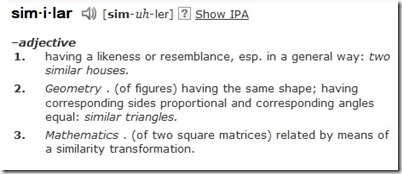Assumption

I consider human brain as a self learning robot which has the capacity to imagine, to think, to compute and to do many more things which are just unimaginable. But to my surprise I have even find out many times brain couldn’t cross a little boundary. What is that little boundary? I am talking about “Assumptions” as those boundary which is a passive creation of brain without consulting anyone. I felt that whenever my brain gets a problem to solve, it creates the so called “No Entry Zone” surrounding the problem and that “No Entry Zone” is nothing but the assumptions. Something like the one below. Assumptions not only limits the way we think but also hinders the creativity and innovativeness of the brain. Some times we just can’t see what is obvious. Let me give one such example which I encountered while reading a book. It will be interesting if you don’t know the solution. Problem Statement: You have to draw 3 straight lines to connect the 9 dots. Now the moment we finish re

